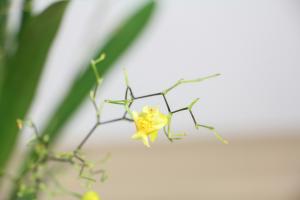When Does Plants Release Water into the Atmosphere
Plants play a significant role in maintaining the balance of the earth's ecosystem. They absorb carbon dioxide and release oxygen, contributing to the overall quality of our environment. But plants also play an important role in regulating the water cycle. They do so by releasing water vapor into the atmosphere through a process called transpiration. Let's take a closer look at when plants release water into the atmosphere and why this process is crucial for the earth's biosphere.
What is Transpiration?
Transpiration is the process by which water moves through the plant from the roots to the leaves and eventually, into the atmosphere. This process begins when the roots absorb water from the soil. The water travels up the stem of the plant, into the leaves, and then is released into the atmosphere as water vapor.
It is important to note that transpiration is not the same as evaporation. Evaporation occurs when water changes from a liquid state to a gas state, typically due to heat or wind. Transpiration, on the other hand, is a biological process that occurs within plants.
When Does Transpiration Occur?
The rate at which transpiration occurs depends on a few factors. One of the main factors is the amount of sunlight the plant receives. When a plant is exposed to light, it opens its stomata, which are the tiny pores on the surface of the leaves that allow for gas exchange. The opening of the stomata allows water vapor to escape from the plant and into the atmosphere.
The humidity of the surrounding air also affects the rate of transpiration. If the air around the plant is dry, water is more likely to evaporate quickly from the leaves, increasing the rate of transpiration. Conversely, if the air is already saturated with water vapor, the plant may not release much water into the atmosphere at all.
Why is Transpiration Important?
Transpiration is crucial for several reasons. First, it helps regulate the earth's water cycle. Water that is released from plants eventually returns to the earth in the form of rain, which is essential for the growth of plants and other organisms.
Additionally, transpiration helps to cool the plant. As water evaporates from the leaves, heat is removed from the plant, which helps to regulate its internal temperature. This is especially important in hot and dry environments where plants may be at risk of overheating.
Transpiration also plays a role in the exchange of gases in the earth's atmosphere. As water vapor is released from plants, it carries with it oxygen and other gases that are essential for life on earth.
The Bottom Line
Transpiration is a vital process that occurs within plants, leading to the release of water vapor into the atmosphere. The rate of transpiration depends on a few factors, including the amount of sunlight and humidity of the surrounding air. This process is essential for regulating the earth's water cycle, cooling plants, and exchanging gases in the atmosphere. As such, it plays a critical role in maintaining the overall health of the earth's biosphere.

 how many times do yo...
how many times do yo... how many planted tre...
how many planted tre... how many pine trees ...
how many pine trees ... how many pecan trees...
how many pecan trees... how many plants comp...
how many plants comp... how many plants can ...
how many plants can ... how many plants and ...
how many plants and ... how many pepper plan...
how many pepper plan...































